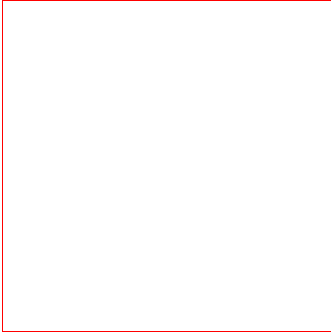Solve A To Solve B
So many programming assignments involve a direct solution. Write a program to do this or write a problem to solve that. It's pretty typical. There's nothing wrong with assignments like these. They allow students to practice what they've been learning and it gives them the opportunity to create some cool programs. All the same, I like it when there's an indirect problem. You're faced with a problem but in order to solve it you first have to solve some other problem
That's why I liked day 10 from this year's Advent of Code.
At it's core the question presents you with a collection of points along with velocities in this form::
position=< 9, 1> velocity=< 0, 2> position=< 7, 0> velocity=<-1, 0> position=< 3, -2> velocity=<-1, 1> position=< 6, 10> velocity=<-2, -1>
Each point moves by adding the x and y components if its velocity each second. For example, the last two points listed above - points (3,-2) nad (6,10) would be transformed overtime as follows:
| Point | Velocity | Second 0 | Second 1 | Second 2 | Second 3 | Second 4 |
|---|---|---|---|---|---|---|
| 3, -2 | -1,1 | 3,-2 | 2,-1 | 1,0 | 0,1 | -1,2 |
| 6,10 | -2,-1 | 6,10 | 4,9 | 2,8 | 0,7 | -2 6 |
At some point in time, if you look at the points on a grid they will spell out a message or at least a sequence of letters. The question asks you to figure out that message. There's a complete example and a nice story around the problem on the Advent of Code site.
The first thought is probably to run this as a simulation. Set up a loop, update the point locations, visualize and see if you have an answer. This isn't trivial for a beginner but it's certainly approachable. It also has a big problem. Unless you happen to have some optical character recognition libaray handy you have to draw and look at the output on every change. Given that it could take thousands of iterations, this is not practical at all.
We can do better by solving another problem first. The key insight is that each point travels along a line. In fact, this problem is a great time to talk about a parametric representation of a line like
<script type="text/javascript" src="https://cdnjs.cloudflare.com/ajax/libs/mathjax/2.7.1/MathJax.js?config=TeX-AMS-MML_HTMLorMML"> </script>
\(L=P+tV\)
Where \(P\)represents an \((x,y)\) point and \(V\) a direction vector \((dx,dy)\).
Regardless of where the points start, at some point all of them will be contained within your field of view after which they will continue along their paths outside of that field of view. We can look at a bounding box for all of the points and when that bounding box is smallest we should be at or close to our message.
This is readily accomplished. We can find a bounding box by finding the smallest and largest x and y coordinates for all the current points and using \((X_{min},Y_{min})\) and \((X_{max},Y_{max})\) as the diagonals of a bounding rectangle and then compare areas of these rectangles. They should decrease at first and then eventually increase.
for time = range(0,some_large_value,stepsize):
new_pts = transform(pts,time)
bbox = bounding_box(new_pts)
if (area(bbox) > area(previous_bbox)):
break // we're close to or at the smallest bounding boxWe can start with a big stepsize and then refine it down until we
hone in on the smallest bounding box.
From there, we can transform all the points using the time that resulted in the smallest bounding box and then display the points to see our message. We might have to go through a small window of times since the actual message might just be close to the configuration yielded from the smallest bounding box. Of course that visualization takes some doing - the actual viewing window might not align with your screeen coordinates, they could all, for example, be negative so you'll probably have to do one last transformation to translate and possibly scale the final points to make it all viewable.
When I first solved the problem, I just dumped the coordinates into a 2 dimentional array and printed it but afterwards I wrote a little clojurescript html5 canvas visualization:

So there it is. It's not a trivial problem for beginners but it is doable. There's a lot to deal with:
- parse the data
This isn't too bad. You could cover regular expressions but even without it isn't too big of a deal. You could also just use an editor to extract the important data or preprocess this for the kids.
- Figure out how to transform the points.
This also isn't too bad. Just loop over all the points with newpoint
= oldpoint + t * velocity
- Figure out the bounding boxes
Also not too bad. Loop over all the points to find the smallest and largest x and y coordinates
- Set up a loop to find the smallest bounding box and hence the time that the message will appear.
and then finally:
- draw the points to visually inspect the answer.
This might be the most persnickety part. When I first coded it my output was upside down and backwards but good enough.
I can't fully put my finger on it but I really enjoyed this problem. I hope you enjoyed my writeup. If you want to check out my solution for this (minus the clojurescript visualization) along with the other Advent of Code problems I finished this year you can find them here.